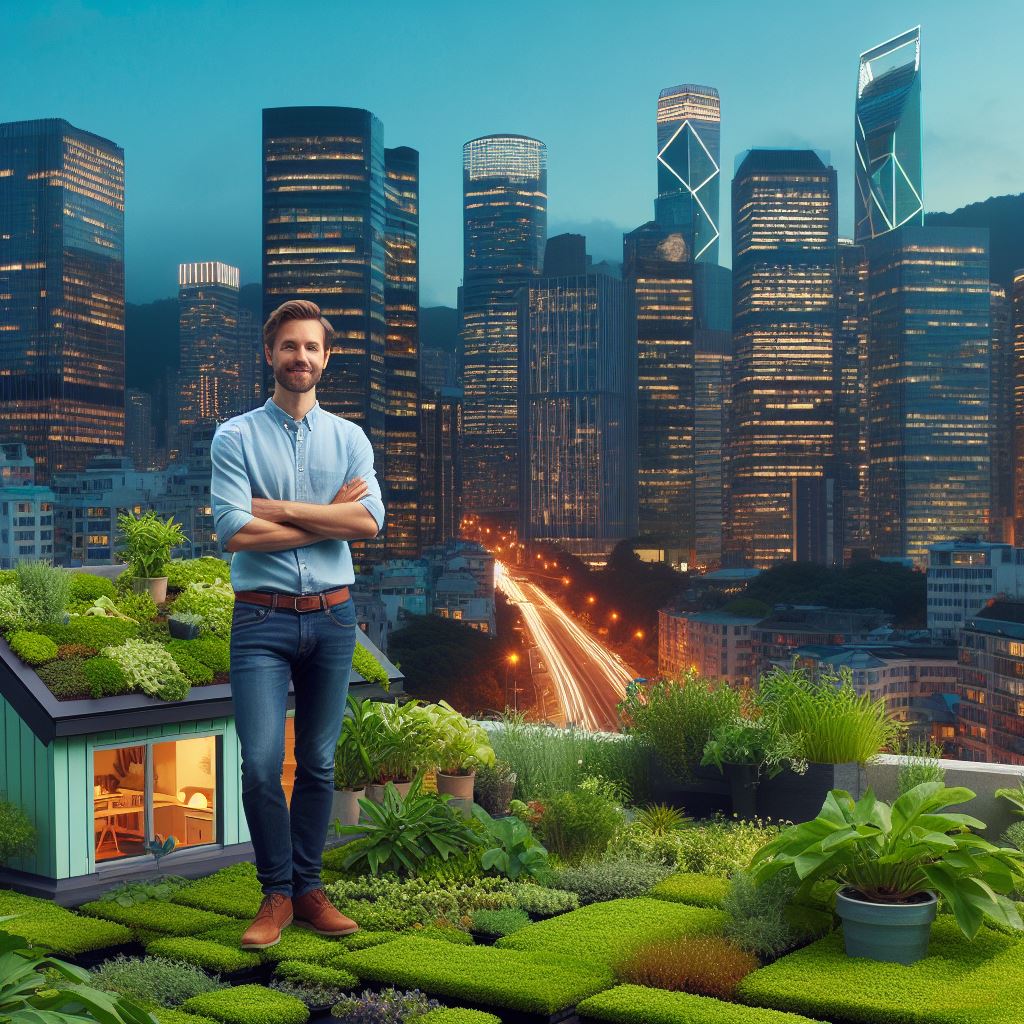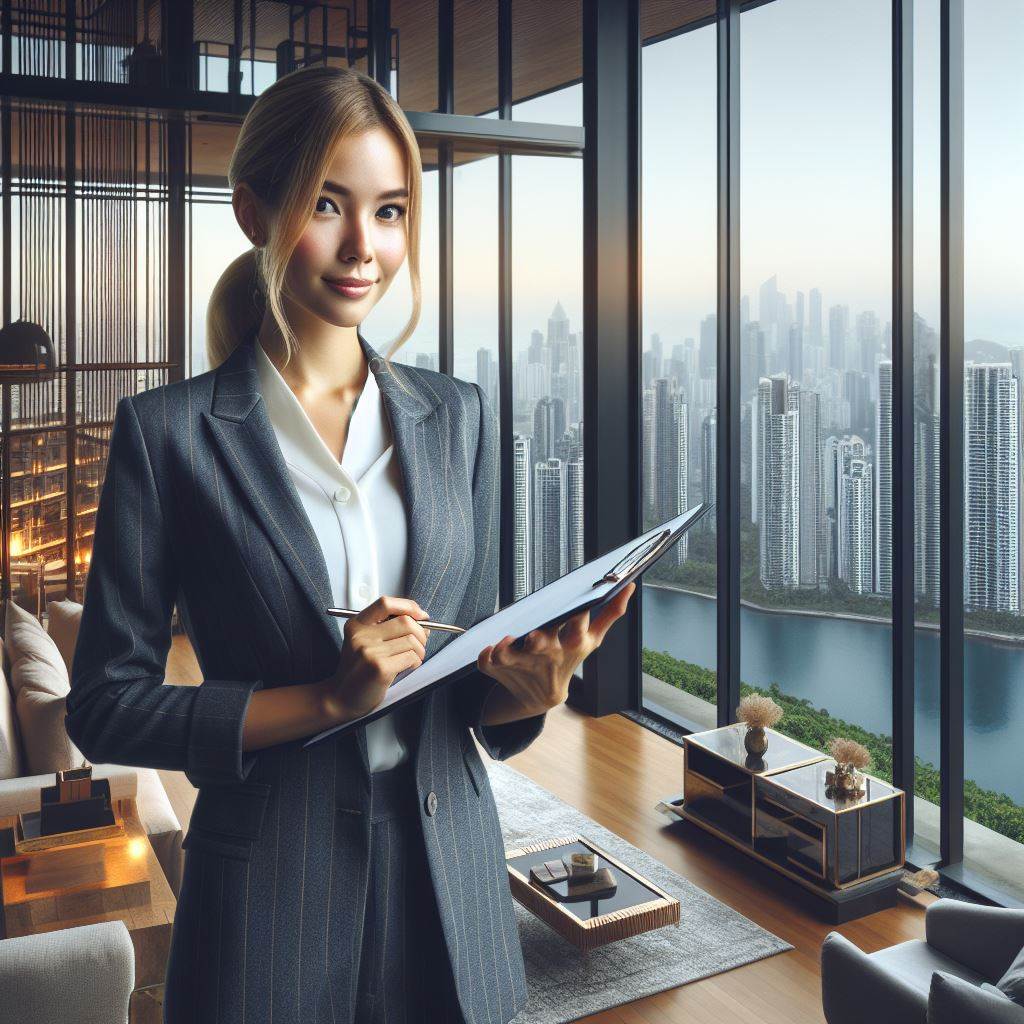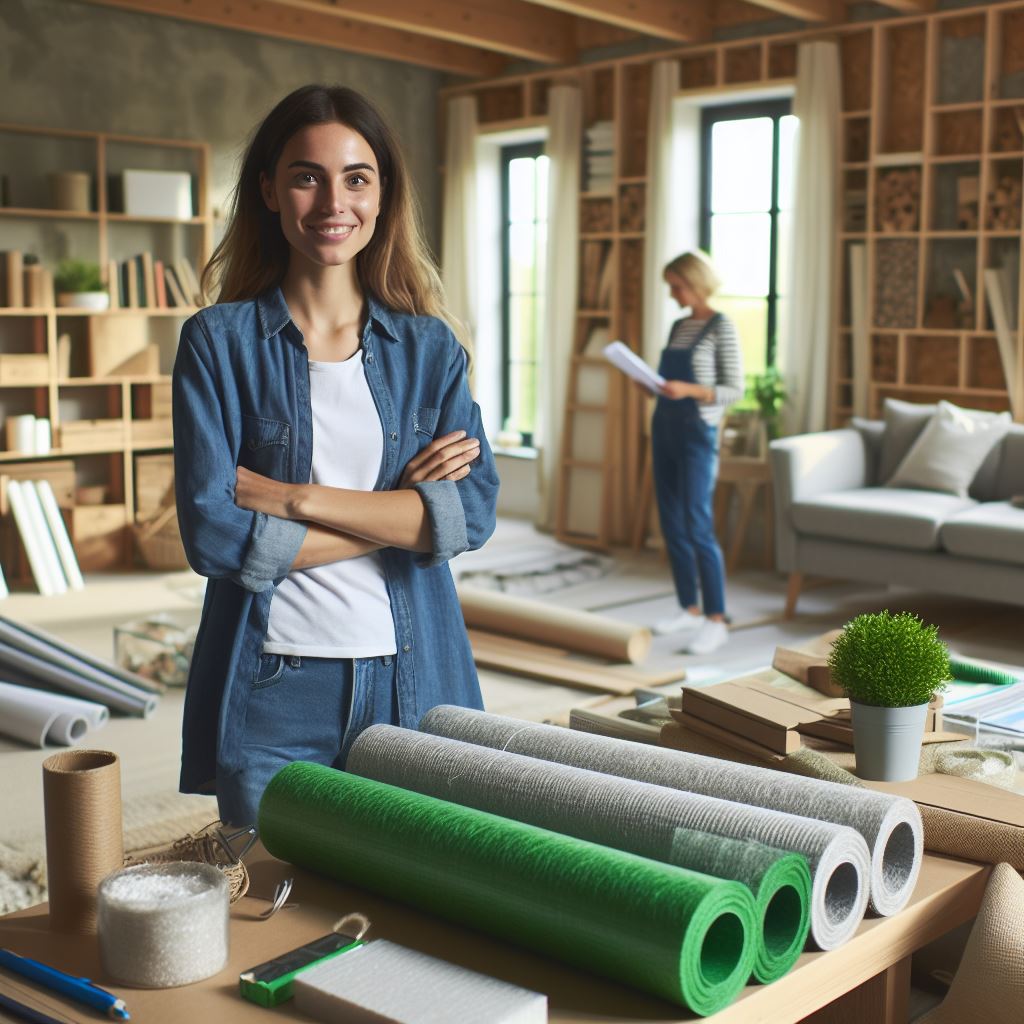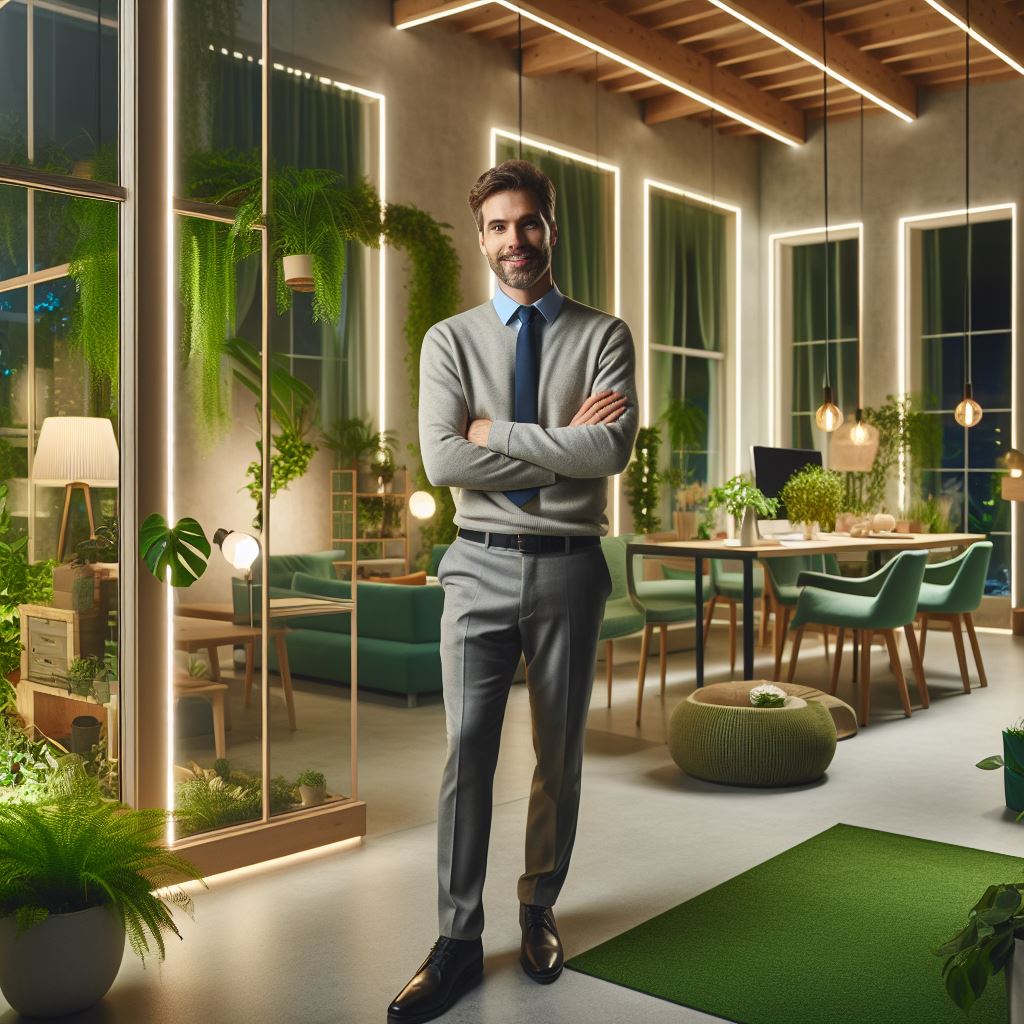Introduction
Green roofs refer to roofs that are partially or entirely covered with vegetation and a growing medium.
They have gained popularity in urban real estate due to their numerous benefits and positive impact on the environment.
Green roofs are a type of roof system that incorporates plants, trees, and greenery into their design, creating a lush and eco-friendly space.
They are designed to support the growth of vegetation, providing a natural habitat for flora and fauna.
Green roofs have become increasingly popular in urban areas as a result of their ability to mitigate the effects of urbanization and improve the quality of life.
They offer a range of advantages such as improved energy efficiency, reduction of stormwater runoff, and enhancement of biodiversity.
In terms of urban real estate, green roofs have transformed the way we view and utilize rooftops.
They provide additional functional spaces for recreational activities, urban farming, and even as social gathering areas.
Green roofs not only add aesthetic value but also increase property value and attractiveness to potential buyers or tenants.
Moreover, green roofs contribute to the overall sustainability and resilience of cities by reducing the urban heat island effect and improving air quality.
They act as natural insulation, reducing the need for heating and cooling systems and resulting in energy savings.
This, in turn, has a positive impact on the financial aspects of real estate by reducing energy consumption and costs.
In fact, green roofs have revolutionized urban real estate by providing a sustainable and environmentally friendly solution.
Their popularity continues to grow due to their positive impact on energy efficiency, stormwater management, biodiversity, and overall urban livability.
Benefits of Green Roofs
Green roofs offer an array of benefits to both the environment and the economy.
Let’s take a closer look at these advantages.
Environmental Benefits
Green roofs are an effective tool for improving environmental sustainability in urban areas.
They offer the following benefits:
- Reducing CO2 Emissions: Green roofs act as natural carbon sinks, absorbing carbon dioxide and other harmful greenhouse gases. By reducing CO2 emissions, they positively impact climate change mitigation.
- Improving Air Quality: The vegetation on green roofs helps in filtering and capturing pollutants such as particulate matter and volatile organic compounds. By cleaning the air, they enhance the overall air quality of cities.
- Mitigating Urban Heat Island Effect: Urban areas experience higher temperatures due to the heat-absorbing properties of concrete and asphalt. Green roofs provide a solution by cooling the surroundings through evapotranspiration, reducing the urban heat island effect.
Economic Benefits
Green roofs not only benefit the environment but also offer economic advantages for property owners and communities:
- Energy Savings from Improved Insulation: Green roofs provide an additional layer of insulation, reducing the energy required for heating and cooling buildings. This results in significant cost savings on energy bills.
- Increased Property Value: Properties with green roofs have higher market value and desirability. The aesthetic appeal and eco-friendly nature of green roofs attract potential buyers, leading to increased property prices.
- Potential for Government Incentives: Many governments and municipalities provide financial incentives, tax breaks, or grants for property owners who choose to install green roofs. This support encourages the adoption of green roof technologies and helps offset installation costs.
In fact, green roofs offer numerous environmental and economic benefits.
They are effective in reducing CO2 emissions, improving air quality, and mitigating the urban heat island effect.
Moreover, they provide energy savings, increase property value, and potentially qualify for government incentives.
Incorporating green roofs in urban real estate is a revolution that promotes sustainability and enhances the quality of both our cities and lives.
Read: Healthcare Real Estate: A 2024 Investor’s Guide
Flourishing Horizons – Exploring the Diversity of Green Roofs
In the bustling landscape of urban real estate, green roofs emerge as a revolutionary paradigm, transforming concrete jungles into thriving ecosystems.
Central to this transformation are the various types of green roofs, each tailored to different architectural and environmental needs.
Extensive Green Roofs
Designed for lightweight structures, extensive green roofs boast a thin soil layer adorned with low-maintenance plants.
These roofs serve as a beacon of sustainability, offering a green refuge without compromising structural integrity.
Resilient succulents and hardy grasses become the heroes of these green spaces, thriving in shallow soils and requiring minimal maintenance.
Intensive Green Roofs
For larger buildings and those envisioning rooftop gardens as an urban oasis, intensive green roofs take center stage.
With a more substantial soil layer, these roofs become a canvas for a diverse range of plants.
From vibrant flowers to small shrubs, the possibilities are limitless.
These green roofs transform the ordinary into the extraordinary, providing a lush sanctuary in the heart of the city.
Semi-Intensive Green Roofs
The best of both worlds converge in semi-intensive green roofs, striking a balance between extensive and intensive designs.
With a medium soil depth, these roofs offer a harmonious mix of plants, combining the resilience of low-maintenance varieties with the aesthetic appeal of a more diverse botanical palette.
This hybrid approach allows for a versatile green space that caters to both form and function.
As the green roof revolution gains momentum, architects and urban planners find themselves presented with an array of choices.
The adaptability of these green roofing options ensures that any structure, regardless of size or purpose, can embrace sustainability without compromising on aesthetics.
Whether it’s the simplicity of extensive green roofs, the opulence of intensive designs, or the balanced charm of semi-intensive options, green roofs promise a future where nature and urbanity coexist harmoniously.
Read: Solar Power: Transforming Commercial Sites

Factors to Consider Before Installing a Green Roof
Installing a green roof is an exciting and sustainable choice for urban real estate.
However, before diving into the project, there are several factors that need to be carefully considered.
By taking the time to evaluate these factors, you can ensure a successful green roof installation that adheres to local regulations and meets your maintenance requirements.
Structural Considerations
One of the primary concerns when installing a green roof is the structural integrity of the building.
The load-bearing capacity of the building must be able to support the additional weight of the green roof.
It is crucial to verify if the existing roof can handle the load or if modifications are necessary to ensure its stability.
When evaluating the conditions of the existing roof, it is important to consider any potential damages or weaknesses.
Addressing repairs or making necessary alterations to the roof beforehand will prevent future issues and ensure the longevity of the green roof.
Maintenance Requirements
Another crucial aspect to consider before installing a green roof is the maintenance it will require.
Green roofs typically need watering, weeding, and fertilization to thrive.
Understanding the specific maintenance needs of the plants and soil on your green roof is essential for its long-term success.
Moreover, it is important to ascertain if you have the capacity and desire to handle the maintenance tasks yourself or if professional maintenance services will be required.
Hiring professionals ensures that your green roof receives the necessary care and attention it needs to flourish.
Local Regulations and Permits
Before starting any construction project, it is essential to familiarize yourself with local regulations and obtain the necessary permits.
Check zoning requirements to ensure that a green roof is permitted in your area.
Some regions may have restrictions or guidelines on configuring green roofs, so it is crucial to adhere to these regulations during installation.
Additionally, conducting environmental impact assessments is often necessary as part of the permit process.
These assessments evaluate the potential effects of the green roof on the surrounding environment, including water drainage, air quality, and wildlife habitat.
Complying with these assessments ensures that your green roof positively contributes to the overall environment.
In essence, installing a green roof requires careful consideration of several factors.
Structural considerations, maintenance requirements, and adherence to local regulations and permits are essential for a successful and sustainable green roof project.
By evaluating these factors beforehand, you can pave the way for a beautiful and eco-friendly addition to your urban real estate.
Read: Innovative Water Conservation in Workspaces
Case studies of successful green roof projects
Green roofs have become a revolution in urban real estate, offering numerous benefits to cities and their residents.
In this section, we will explore two exceptional case studies that showcase the success of green roof projects.
These two case studies demonstrate how green roofs can transform urban landscapes, provide numerous benefits, and elevate the overall real estate value.
Incorporating green roofs in cities helps to combat the negative effects of urbanization, such as pollution and lack of green spaces.
By repurposing existing infrastructure, like the High Line Park project in New York City, cities can create valuable and sustainable spaces.
High Line Park, New York City
The High Line Park project effectively turned an unused railway track into a lush green oasis.
Beyond the aesthetic appeal, the presence of green roofs has significantly improved air quality in the surrounding area.
The vegetation on the green roofs acts as a natural filter, trapping dust and pollutants from the air and releasing clean oxygen.
This reduction in air pollution has immense health benefits for the residents of the area.
Furthermore, green roofs contribute to biodiversity.
The introduction of plant life through these projects attracts various bird species and insects, supporting the local ecosystem.
By creating habitats for wildlife, green roofs help restore balance in urban environments.
Hotel Via, San Francisco
Moving from New York City to San Francisco, the Hotel Via stands as an excellent example of how green roofs can enhance real estate properties.
The green roof at the Hotel Via not only provides a beautiful and calming space for guests but also increases the overall property value.
The rooftop bar, with its panoramic views, offers a unique and enjoyable experience for visitors, making the hotel a sought-after destination.
The presence of a green roof sets the hotel apart from competitors by offering a tranquil environment in the midst of the bustling city.
This added amenity increases guest satisfaction and attracts more people to stay at the hotel.
Moreover, the green roof contributes to the hotel’s sustainability efforts.
By reducing the heat island effect, the rooftop vegetation helps to regulate the temperature inside the building.
This, in turn, reduces the hotel’s reliance on air conditioning, resulting in lower energy consumption and costs.
In a nutshell, green roofs have revolutionized urban real estate by providing valuable green spaces and numerous benefits.
The case studies of High Line Park in New York City and the Hotel Via in San Francisco highlight the positive impact of incorporating green roofs into urban environments.
From improved air quality and biodiversity to enhanced property value and guest experience, green roofs are a win-win solution for cities and their residents.
Read: Energy Efficiency: Key for Modern Buildings
Challenges and Potential Drawbacks of Green Roofs
Despite the numerous benefits and potential revolution in urban real estate, green roofs also pose several challenges and potential drawbacks.
It is important to consider these factors before deciding to install a green roof.
High Initial Costs of Installation
One of the main challenges of green roofs is the high initial costs associated with their installation.
Building owners and developers may need to invest a significant amount of money upfront to implement green roof systems.
Potential Structural Concerns and Risks
Green roofs can add additional weight to the building structure, which may raise concerns about its ability to support the added load.
Proper engineering and structural analysis are crucial to ensure the safety and stability of the building.
Limited Availability of Skilled Professionals for Maintenance
Maintaining a green roof requires specialized knowledge and skills.
However, there is a limited number of professionals with expertise in green roof maintenance, which can make it challenging to find reliable and qualified individuals or companies to handle the ongoing upkeep.
Challenges Related to Irrigation and Drainage Systems
Green roofs require appropriate irrigation and drainage systems to ensure the plants receive enough water while preventing excessive water accumulation.
Designing and implementing efficient and effective irrigation and drainage systems can be complex and may require additional investment.
Potential for Pest and Weed Infestation
Green roofs create an ideal habitat for pests and weeds due to the presence of vegetation.
Regular inspections and integrated pest management strategies are necessary to prevent and control any infestations, which can add to the maintenance costs.
Limited Plant Species Options
Depending on the climate, available plant species options for green roofs may be limited.
Not all plants can tolerate the harsh conditions of a rooftop, such as strong winds, intense sunlight, and shallow soil depth.
Therefore, the selection of suitable plant species may be restricted.
Fire Safety Concerns
Green roofs, especially those with extensive vegetation, raise concerns about fire safety.
The presence of dry plants and accumulated organic matter can increase the risk of fire, requiring proper fire prevention measures and the use of fire-resistant materials during installation.
Potential for Leakage and Waterproofing Issues
Improper installation or maintenance of green roofs can lead to leakage and waterproofing issues.
It is crucial to ensure proper installation techniques, quality waterproofing materials, and regular inspections to prevent water infiltration and protect the building structure from damage.
While green roofs offer a multitude of benefits, it is important to consider the challenges and potential drawbacks associated with their implementation.
High upfront costs, structural concerns, limited availability of skilled professionals, irrigation and drainage challenges, and pest infestation risks are among the factors to be taken into account.
Proper planning, design, installation, and ongoing maintenance can help mitigate these challenges and ensure the successful integration of green roofs in urban real estate.
Conclusion
Green roofs offer numerous benefits and have great potential in urban real estate.
They improve air quality, reduce energy consumption, mitigate the urban heat island effect, and enhance biodiversity.
Green roofs also provide additional usable space for recreational activities.
Given these advantages, it is essential for developers and property owners to consider incorporating green roofs into their buildings and projects.
Not only will this boost property value and attract environmentally conscious tenants, but it will also contribute to creating a healthier and more sustainable urban environment.
Furthermore, it is crucial to encourage further research and development in the field of green roofs.
By supporting innovation and exploring new technologies, we can enhance the effectiveness and efficiency of green roofs and unlock even more benefits.
By embracing green roofs, we can revolutionize urban real estate, transforming roofs into living ecosystems that benefit both humans and the environment.
Let us take action and make green roofs a standard feature in our cities, paving the way for a brighter and greener future.




